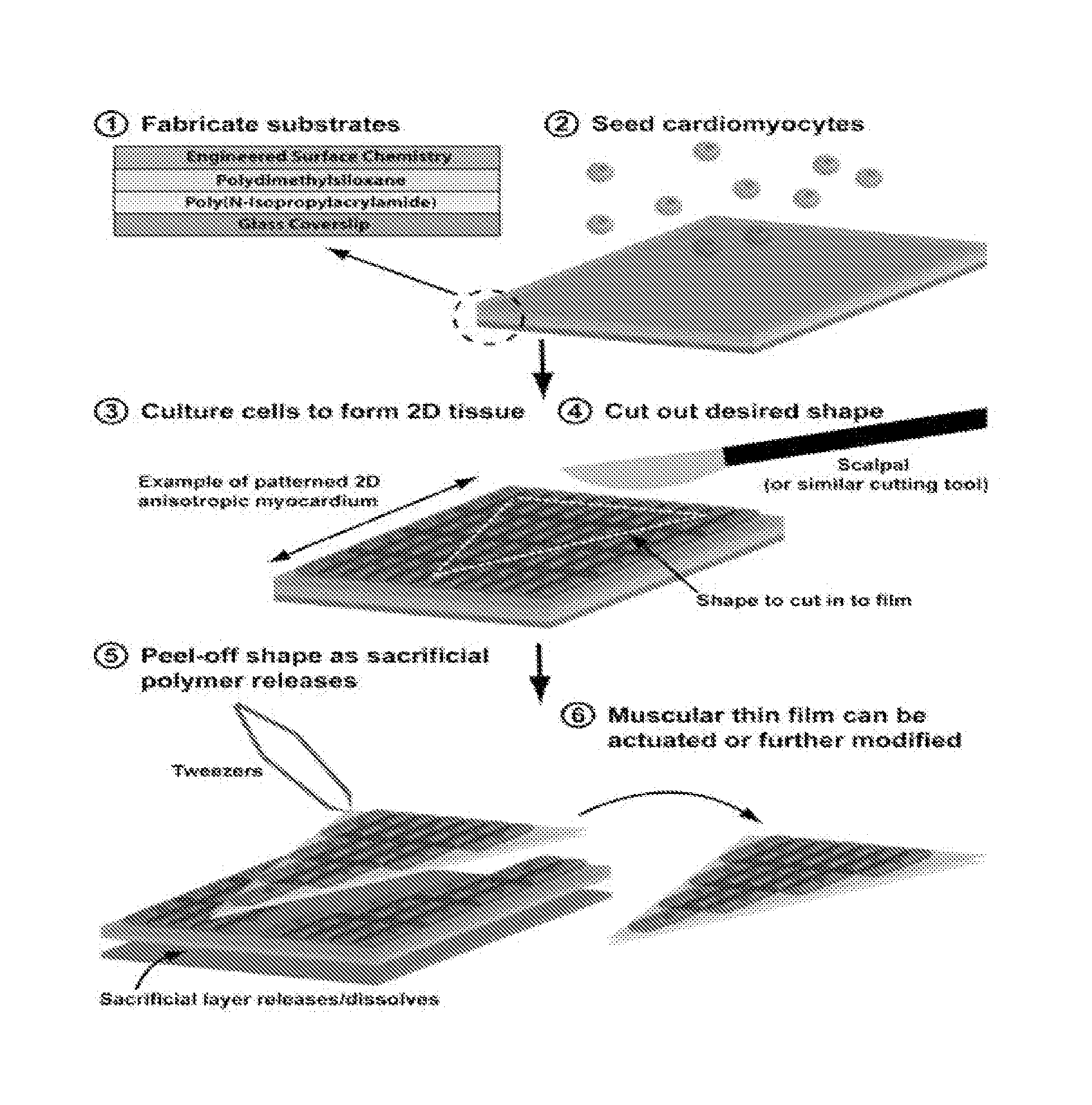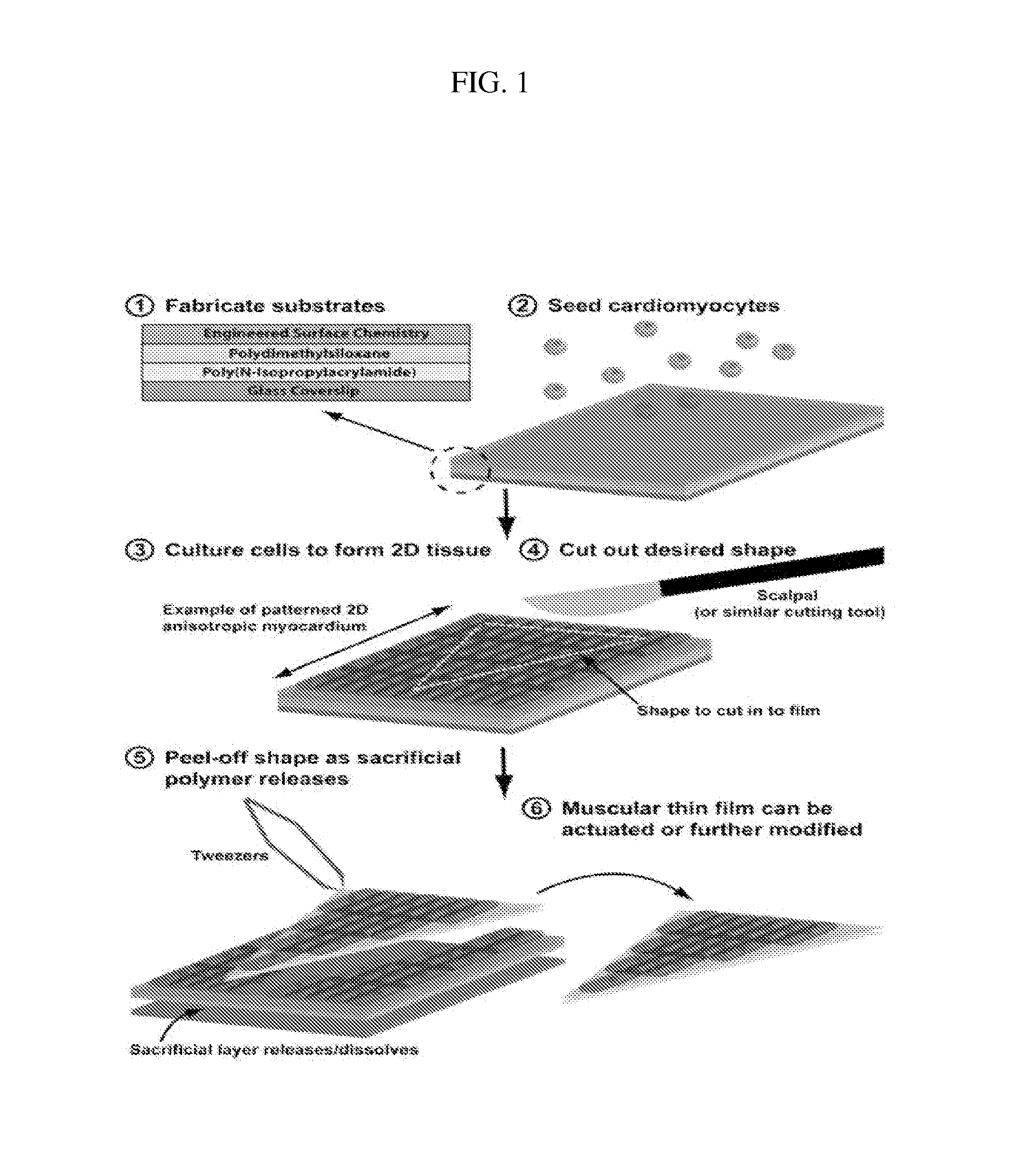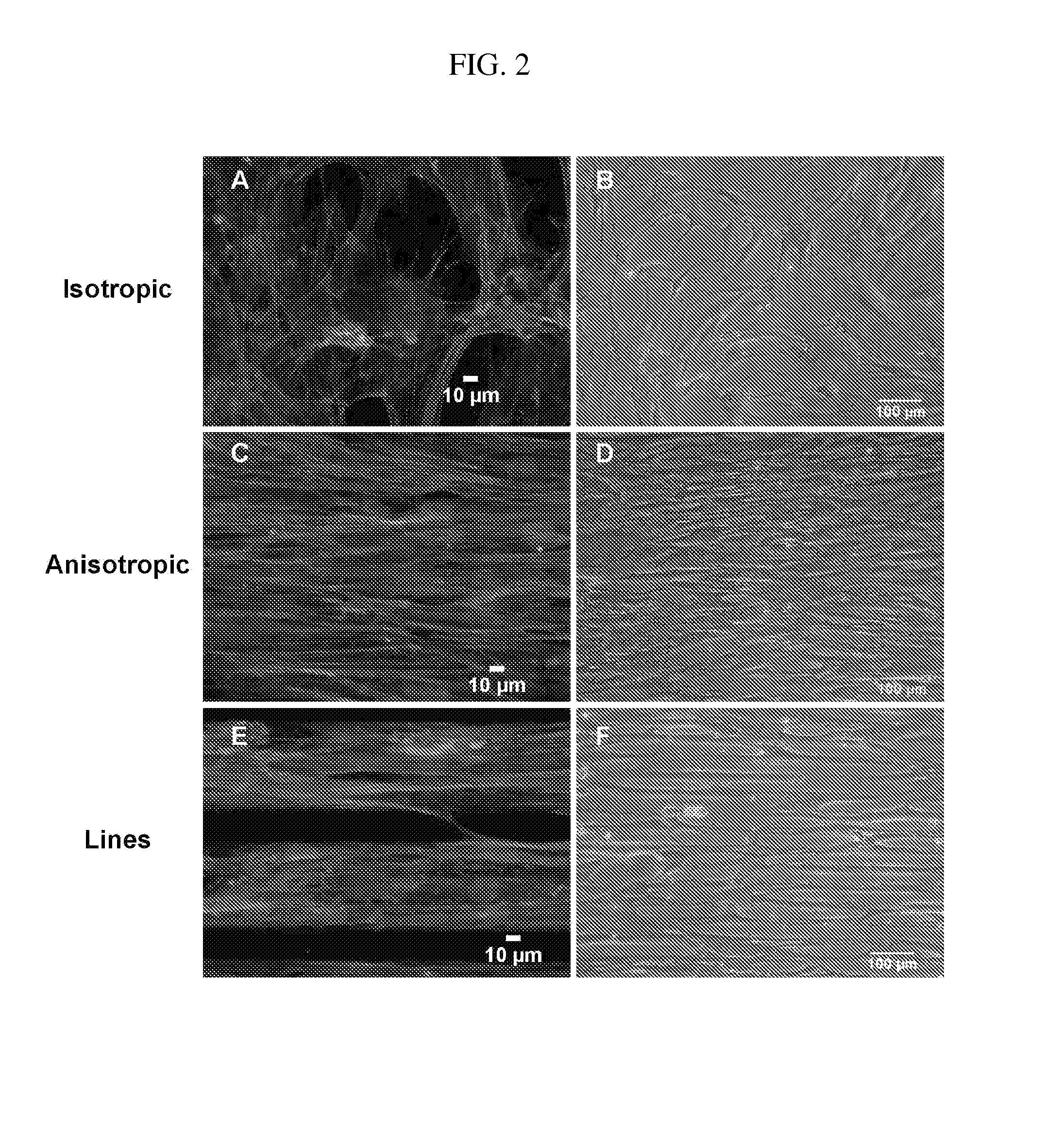Anisotropic biological pacemakers and av bypasses
a technology of biological pacemakers and bypasses, applied in the direction of biocide, therapy, genetic material ingredients, etc., can solve the problems of increased patient's inflammatory response, increased risk of infection, and unresponsive implantable devices to autonomic heart rate modulation, and achieve the effect of convenient in vivo implantability
- Summary
- Abstract
- Description
- Claims
- Application Information
AI Technical Summary
Benefits of technology
Problems solved by technology
Method used
Image
Examples
example 1
In Vitro Construction of a Pacing Muscular Thin Film
[0119]To demonstrate the construction of pacing MTFs, fibronectin was micropatterned onto PDMS coated glass coverslips and seeded with either ventricular myocytes or human mesenchymal stem cells (hMSCs). HMSCs are stable in cell lines and have low antigenicity. They are also able to transfer dye and to transmit current to one another, to other cell lines, and to myocytes (Potapova I., et al., (2004) Circ. Res 94:952-959; Valiunas V., et al. (2004) J. Physiol 555.3:617-626). Moreover, adult human mesenchymal stem cells form Cx43 junctions among themselves and with ventricular myocytes.
[0120]Specifically, linear patterns of 20 μm wide lines of fibronectin were transferred onto UV-Ozone treated PDMS (silicone polymer) coated coverslips. Unprinted areas were then blocked with Pluronics-F127 surfactant to prevent cell adhesion. For the construction of MYFs with anisotropic patterns, the same 20 μm wide lines of fibronectin were printed ...
example 2
Surgical Implantation of Pacing Muscular Thin Films
[0131]Surgical implantation of pacing MTFs is accomplished by surgically or enzymatically ablating the sinoatrial node in anesthetized rats and placing pacing MTFs on the apical surface of the right atria (see FIG. 14). More specifically, surgical ablation of the sinoatrial node is accomplished by cauterizing the node in vivo during survival surgery (Tamayski et al., Physiol Genomics. 2004: 16(3) pp. 349-60). Pacing is restored by implantation of a pacing MTF constructed as described in Example 1. Briefly, 70 mg / kg of pentobarbital sodium is administered to induce anesthesia. After an adequate depth of anesthesia is attained, the rodent is placed in a supine position and a taut 5-0 ligature is situated behind the front upper incisors to keep the neck slightly extended. The tongue is retracted and held with forceps while inserting a 20 gauge catheter into the trachea. The catheter is then attached to a ventilator via a Y-shaped conne...
example 3
Constructing Atrioventricular Muscular Thin Films
[0133]Engineered atrioventricular muscular thin films (AVN-MTFs) are constructed in a similar manner as the pacing MTFs. The AVN-MTF includes a flexible polymer layer and a population of excitable cells (e.g., cells derived from a sinoatrial or atrioventricular node, atrial or ventricular myocytes, embryonic stem cells, adult mesenchymal stem cells, or genetically engineered cells) coated on the flexible polymer layer to form a tissue structure which can bridge AV conduction defects in vitro. The biologic AVN-MTF will bridge conduction obstacles with an optimal A-V delay and unidirectional conduction block to prevent retrograde V-A activation. To test the properties of the AVN-MTF in vitro, AVN-MTFs will be transplanted onto populations of atrial and ventricular myocytes separated by an obstacle (FIG. 13). Optical mapping will be used to confirm conduction between the two cell populations.
[0134]Several design parameters will be varied...
PUM
| Property | Measurement | Unit |
|---|---|---|
| temperature | aaaaa | aaaaa |
| temperature | aaaaa | aaaaa |
| thickness | aaaaa | aaaaa |
Abstract
Description
Claims
Application Information
 Login to View More
Login to View More - R&D
- Intellectual Property
- Life Sciences
- Materials
- Tech Scout
- Unparalleled Data Quality
- Higher Quality Content
- 60% Fewer Hallucinations
Browse by: Latest US Patents, China's latest patents, Technical Efficacy Thesaurus, Application Domain, Technology Topic, Popular Technical Reports.
© 2025 PatSnap. All rights reserved.Legal|Privacy policy|Modern Slavery Act Transparency Statement|Sitemap|About US| Contact US: help@patsnap.com



